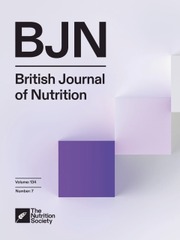No CrossRef data available.
Association Between Body Fat Percentage and Urinary Flow Rate in US Adults: Analysis of the National Health and Nutrition Examination Survey 2011–2018
Published online by Cambridge University Press: 13 March 2025
Abstract
To assess the relationship between total body fat percentage(TBFP), trunk fat percentage(TFP), and urinary flow rate(UFR).We stratified by age and sex and hypothesize that TBFP and TFP are negatively associated with UFR across all groups.The study utilized data from the National Health and Nutrition Examination Survey (NHANES), which includes a series of nationally representative cross-sectional surveys. The data analyzed in this study included 18-59-year-old females and males who participated in the NHANES surveys conducted between 2011 and 2018. Multivariable-adjusted logistic regression models were used to examine the association between body fat percentages measured by dual-energy X-ray absorptiometry (DXA) scans and UFR.A total of 10,521 participants were included and an increase in total body fat percentage(TBFP) was inversely associated with in UFR (β= -0.013,95% confidence interval[CI]-0.018 to -0.007), Similarly,an increase in trunk fat percentage(TFP)was inversely associated with UFR(β=-0.014,95%CI-0.018 to -0.009).Stratified analyses by gender revealed that among males, an increase in TBFP and TFP was inversely associated with in UFR (β=-0.011, 95% CI -0.019 to -0.004; β=-0.016, 95% CI -0.022 to -0.009), although this association was not observed in the 18-35 age group. Among females, an increase in TBFP and TFP was inversely associated with UFR (β= -0.016, 95% CI -0.023 to -0.008; β= -0.012, 95% CI -0.019 to -0.006), and this association was observed across all age groups.Our study shows that in the population aged 18 to 59, both total body fat and truncal fat accumulation are inversely associated with urinary flow rate. However, the association in males under 35 is not significant. Future research should delve into the mechanisms behind these gender and age differences to provide a more precise basis for developing targeted prevention and intervention measures.
- Type
- Research Article
- Information
- Copyright
- © The Author(s), 2025. Published by Cambridge University Press on behalf of The Nutrition Society
Footnotes
These authors contributed equally to this work and should be considered Co-Corresponding authors


